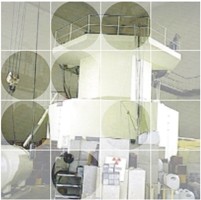More about the Institute |
|
Evolvement of research areas The reactor TRIGA went critical on May 31, 1996. Laboratories for reactor physics, plasma research and nuclear chemistry were build round the reactor. It has been used for analysis of the dynamic and structural behaviour of solid materials and liquids using neutron elastic and inelastic scattering and neutron radiography. One of the main uses of the reactor is for chemical analyses, using neutron activation analysis. The reactor is used also to produce short lived radioisotopes for Slovenian industry, including zinc, bromine, cobalt and sodium, in addition to fluorine-18 and technetium-99m for use in hospitals. Between 1991 and 1993 the reactor was completely refurbished and upgraded to pulse mode operation. |
J. Stefan Institute, Jamova 39, 1000 Ljubljana, Slovenia, Telephone: +386 1 477 39 00 |

